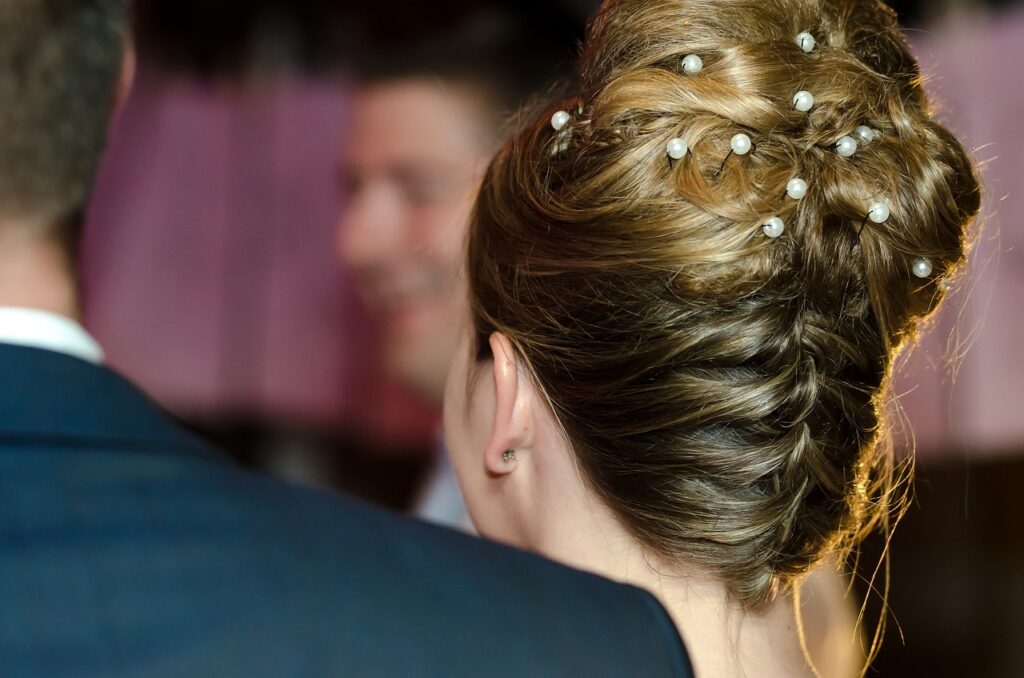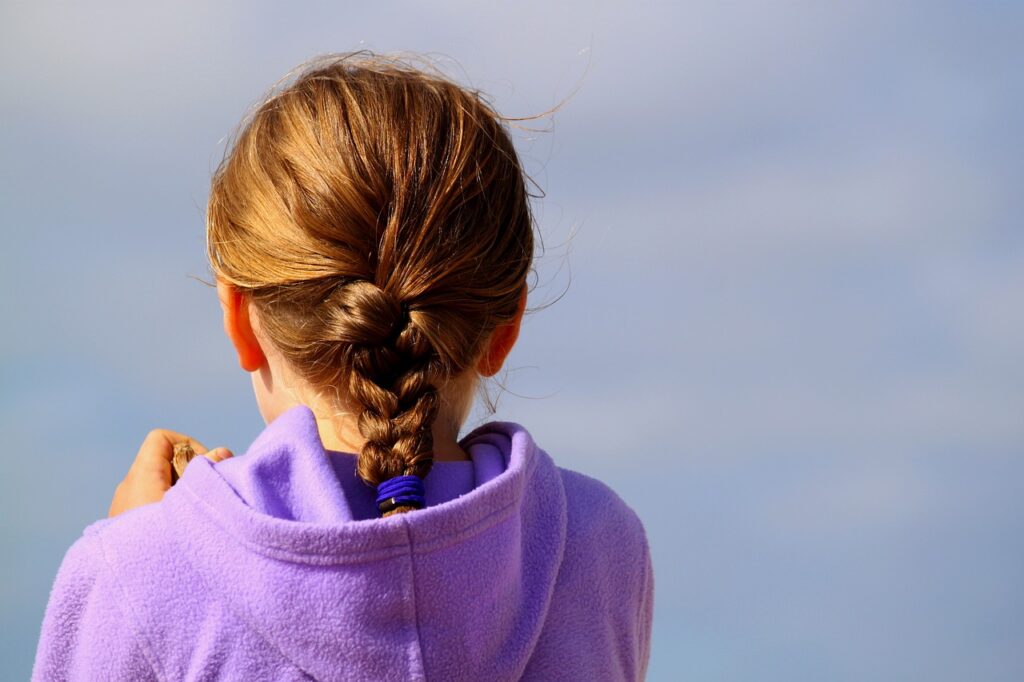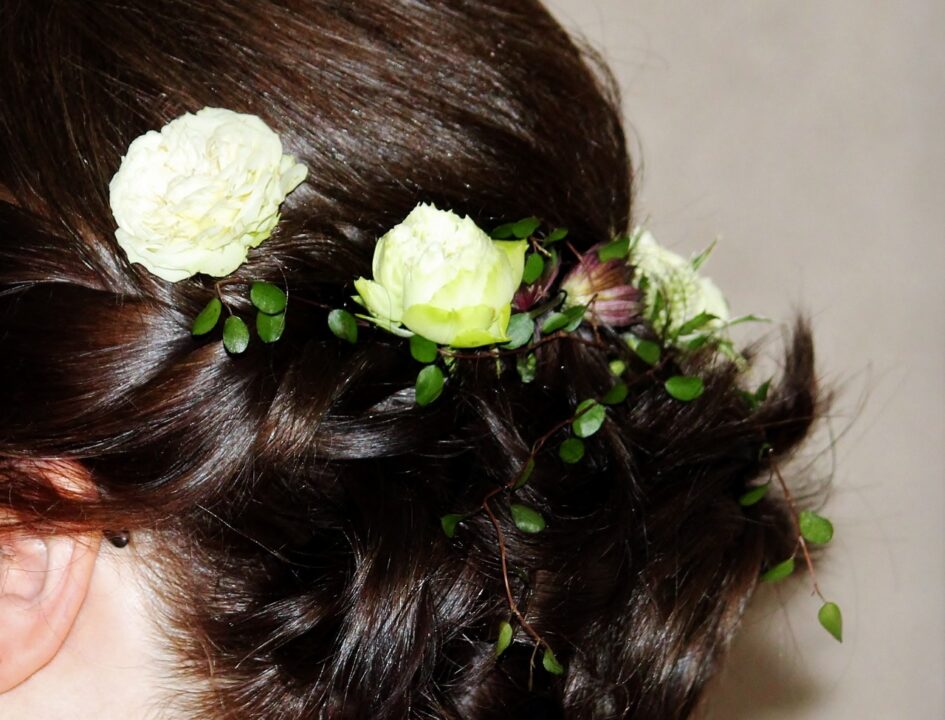In the world of hair extensions, quick weave and sew-in are both popular. It’s been a fierce drag between which of them is better, more durable, and more classy.
In this article, we’ll be looking at the difference between weave vs sew-in.
Now let’s have a good understanding of what quick weave and sew-in are. Quick weaves are hair extensions that are simple and quick to apply.
A weft, or track, is used to stitch either synthetic or human hair, which is subsequently bonded to the natural hair using a specialized bonding adhesive.
Quick weave hair extensions have the advantage of being applied quickly compared to other forms of extension, and they may be removed without causing damage to the natural hair.
When it comes to special occasions or regular hairstyle changes, quick weaves are popular.
Sew-ins, on the other hand, are also quite popular since they provide a more durable and secure alternative.
The hairdresser will first create cornrows with the natural hair before applying a sew-in weave. Next, a needle and thread are used to sew the hair weft onto the braids.
Sew-ins can last for several weeks or even months because the hair is firmly secured. They might also be more damaging to natural hair and more difficult to remove. If you’ve read to this point of the article, I believe you now understand what a quick weave is and what a sew-in is.
Difference between Weave vs Sew-in

Below are 20 differences between a quick weave vs sew-in.
1. There is a difference in the application method.
The application method is one major difference between weave vs sew-in.
Sew-in weaves are sewn onto braids. We mentioned earlier that the hair is braided into cornrows before the extension is sewn in, while quick weaves are applied with bonding adhesive or clip-ins. Sew-ins take longer to apply than the others.
2. Removal method.
As the application method differs, so does the removal method. Sew-ins need both the braids and the hair to be taken out before being removed, whereas quick weaves can be taken out with a solvent to dissolve the bond or glue used in holding the hair together or by just unclipping the hair. Here’s another difference between weave vs sew-in.
3. Duration of hair.
The length at which these hair extensions can be carried is an excellent difference between quick weave vs sew-in. While sew-ins can be carried for several months due to the way they are attached to the hair, quick weaves usually only last for a few weeks.
The nature of the materials is another determining factor. The synthetic nature of quick weaves would not survive the test of being carried for several months; it would quickly go out of style.
4. Style options
The way this hair can be styled is another difference between quick weave vs sew-in. Because sew-in hair can be dyed, curled, and straightened, it offers additional styling flexibility, but quick weaves can’t be styled in different ways like sew-ins. This is one reason why sew-in hair can be used for longer periods than a quick weave.
5. Maintenance
Another difference between quick weave and sew-ins is their maintenance. Sew-ins require more attention since they need frequent washing and styling, whereas quick weaves require less.
One reason for this could be that sew-ins are carried for longer periods than quick weave; they tend to lose their style and accumulate dirt.
6. Cost of purchase
Quick weaves are usually less expensive than sew-in weaves. While sew-in weaves are much more expensive to purchase and maintain, you can use them for a longer period of time.
The quality of sew-ins and the materials they are made of also contribute to the high cost of purchase. This is another difference between quick-weave and sew-in.
7. Damage to the Hair
Generally, hair extensions, if not applied properly, can cause damage to natural hair. Quick weaves are less likely to harm natural hair since they are not directly attached to the hair, unlike sew-in weaves, although both can harm the hair if done incorrectly. Care should be taken when applying these extensions to the hair to avoid damage that may lead to hair loss.
8. Comfort
Another major difference between quick weave vs sew-in is the comfortability they bring. What’s the essence of hair extensions if they are not comfortable to wear?
Since quick weaves are not sewn very tightly to the hair, they are usually more comfortable than sew-in weaves. The technical process of applying sew-ins to the hair causes discomfort, as does the bulky nature of it.
9. Weight of hair extensions
The weight of both hair extensions is another striking physical difference between quick weaves and sew-ins. Compared to sew-ins, quick weaves are often less bulky and lighter.
Sew-ins weigh more and are more bulky in that they are made from real natural hair, unlike quick weaves that are made from synthetic materials.
10. Natural look
Quick weaves often lack the natural appearance that sew-in weaves do. Since sew-in weaves are fastened to the hair directly, they complement natural hair better.
In order to provide an even more natural appearance, sew-in weaves can also be tailored to match the natural hair’s structure and color.
The synthetic hair used in quick weaves, on the other hand, can make them appear less natural. If you’re looking for a good recommendation for the one that would give you a more natural appearance, I would recommend sew-in weaves.

11. Durability
The durability of these hair extensions is another major factor to consider. Sew-ins are more durable and resilient because sew-in weaves are affixed with greater security than a quick weave.
Sew-ins are attached directly or sewn tightly with a thread to the braids of the hair, unlike quick weaves that have been attached with a bond.
12. Heat styling
Sew-in weaves can be styled in different ways and with different styling tools, unlike quick weaves. Curling irons, straighteners, and blow dryers can be used to style sew-in weaves. Heat cannot be used to style quick weaves since they are made from synthetic materials. The application of heat would affect the appearance and durability of the hair.
13. Ready-made or not?
Having ready-made hair is one easy way to save time and stress. Quick weaves can be purchased already styled and all you have to do is install them on the hair.
While sew-in weaves can only be styled after installation,. This would require a lot of time and energy from the stylist. If you’re looking for ready-made hair extensions, then quick weave is a great option for you.
14. Installation time duration.
The time taken to install is another difference between quick-weave and sew-in. Quick weaves can be installed quicker; they can be put in less than an hour, whereas sew-in weaves may require many hours. Sew-in weaves require a longer time to install since they have longer procedures to observe, like prepping the hair into cornrows before installation.
15. Reusability
Quick weaves are not reusable since they easily go out of style and shape due to their synthetic nature; however, sew-in weaves can be used for several installations. Sew-ins can always be treated and maintained any time they go out of style and shape; hence, they can be reused as many times as possible.
16. Customization
Being able to properly match your natural hair to a sew-in weave is one of its biggest advantages. With sew-in weaves, you can precisely match the color, texture, length, and style of the extensions to your hair.
This gives the effect of being more seamless and gives you the precise appearance you desire. Quick weaves typically come in a small variety of colors and textures and are less adjustable.
Therefore, sew-in weaves are the way to go if you want to be able to create a look that is all your own.
17. Maintenance products
Care and upkeep requirements are another distinction between fast weaves and sew-in weaves. Products for human hair, like shampoo, conditioner, and leave-in treatments, are necessary for sew-in weaves.
This is so that they can receive the proper care, as sew-in weaves are created from actual human hair. Conversely, quick weaves can be cleaned with ordinary shampoo and conditioner because they are composed of synthetic hair.
Though they might need to be changed more frequently, rapid weaves might not last as long as sew-in weaves.
18. Consistency
Certainly, one of the main distinctions between rapid weaves and sew-in weaves is consistency. A professional stylist is often needed for installing sew-in weaves, which are fixed using a thread and needle.
By doing this, the weave is applied steadily and evenly, and it is less likely to move or break over time.
Conversely, quick weaves are frequently applied by hand and are more likely to exhibit application irregularities. Consequently, compared to quick weaves, sew-in weaves are typically more consistent in terms of appearance and quality.
19. Accessibility
Accessibility is another difference between quick weave vs sew-in. Professional stylist assistance is required for sew-in weaves, which can be highly costly.
Furthermore, it can take many hours to complete the installation process. Quick weaves, on the other hand, are easily applied at home in a matter of minutes and can be found at most beauty supply stores.
Quick weaves can be a more feasible choice for those on a tight budget or with little time. On the other hand, quick weaves would not be as durable as sew-in weaves.
20. Scalp health.
The effect that sew-in weaves and quick weaves have on scalp health is another important distinction. If sewn in correctly, sew-in weaves shouldn’t harm the scalp in any way.
On the other hand, an improperly installed or overly tight weave can generate tension on the scalp, which can result in migraines, hair loss, and other problems.
Conversely, because of the chemicals and adhesives used in their application, quick weaves can cause irritation to the scalp. To prevent any harm to the scalp, it’s crucial to properly follow the directions for applying and taking off quick weaves.
Conclusion
In conclusion, there are benefits and drawbacks to both quick and sew-in weaves. Although sew-in weaves are more costly, they look more natural and are more durable.
Although they offer more personalization choices, they do require professional installation.
While quick weaves are more practical and less expensive, they might not last as long and, if done incorrectly, could harm the scalp. The optimal option for you ultimately comes down to personal preference, financial limits, and time constraints.



